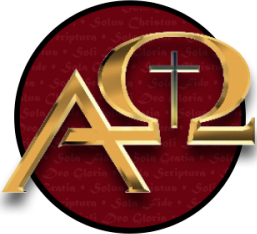We noted in our last installment the presentation of twenty some odd pages of citation regarding the textual integrity of a (Codex Sinaiticus) by our Islamic authors. They tip their hand (as if we were any longer wondering about their bias) when they introduce this material, taken from James Bentley’s Secrets of Mount Sinai: The Story of Codex Sinaiticus, by saying, “The proof of the lack of textual integrity of the Gospels themselves get more tangible and touchable if one reads” Bentley’s book. I.e., once again, “textual variation in hand written manuscripts means there is no textual integrity in the Gospels.” We have noted the less-than-robust form of argumentation underlying our authors’ presentation in previous portions of this series. But we turn now to offering some comments on Bentley’s material. Given the context provided by our authors themselves, we will assume that they would find any discussion of textual variation, etc., to be supportive of their views.
Bentley begins with a review of the origin of the manuscript, noting the fact that more than one scribe was involved (given its massive size, that is common). Likewise, he speculates as to whether this is a direct copy of an exemplar (i.e., when one copies from another manuscript) or whether it was dictated, or both. Some particularities of the writing styles of the scribes is noted, including the fact that one scribe was an atrocious speller (which would only be relevant if he was taking dictation, not if he was copying from an exemplar). If our authors believe the very process of producing a manuscript three hundred years before Mohammed was born is evidence against the textual integrity of the New Testament, we can only once again point to the existence of the manuscript tradition as a whole, wherein the means for correction of any single manuscript can be found (i.e., through the application of textual critical studies that recognize scribal errors, tendencies, etc. one has the corrective in the manuscripts themselves).
Next it is noted that Sinaiticus is not complete in its current form, which again is hardly unusual for a book nearly 1700 years old. Bentley reports that a “must have contained about 790 leaves.” Look at the picture provided earlier and you can see why the work is so large. A number of times it is noted that the book contains non-canonical works, such as the Shepherd of Hermas or Apocryphal works. But once again, this assumes the ability to read the minds of the scribes, as if their inclusion indicates canonicity. Making a book was a huge project. Caring for a book was just as tedious. It is much easier to carry for one object than a dozen, hence, unlike our modern situation, where we would never dream about binding together various books with the Scriptures, the production of something as large as a would be better viewed as the production of a Christian library, wherein one has all the books one wishes to read and benefit from. One can only speculate on the canonical views of any one scribe, group of scribes, or even the patron paying the cost of the time-intensive and costly project.
Next, we are informed that a did not remain in its original condition during its many, many centuries of use. “As he studied the codex, the eagle-eyed Tischendorf counted 14,800 such corrections made by nine separate correctors.” I had addressed this in The King James Only Controversy:
Others accuse it of being so full of errors as to be almost useless. There are indeed many corrections in the text of a, but such is hardly surprising. A handwritten text that is used for 1,500 years is going to collect a few corrections along the way! Moreover, there is a note in the Old Testament portion that even indicates that at some point in the past there had been an effort to correct the manuscript to a different standard, which, of course, would produce a fair amount of alteration. Imagine taking an NASB and trying to make it read like an NKJV!
One can only assume that our Islamic authors are noting these facts (many sections end with ellipses, and we will comment on this in a future installment) as being supportive of their thesis, but we can only reply by pointing out the reality of the situation. This manuscript was used for many centuries. That scribes sought to emend it is hardly surprising; if anything, we can be thankful for the fact! Consider this: here we have a treasure in which we not only have text going back to the earliest centuries, but we have a veritable text book on scribal tendencies and the transmission of the text over time. Only those who have a standardized, “this is your ultimate authority! Accept it on the basis of our saying so” kind of text (like the Qur’an) can miss the value, indeed, the treasure, that is a.


